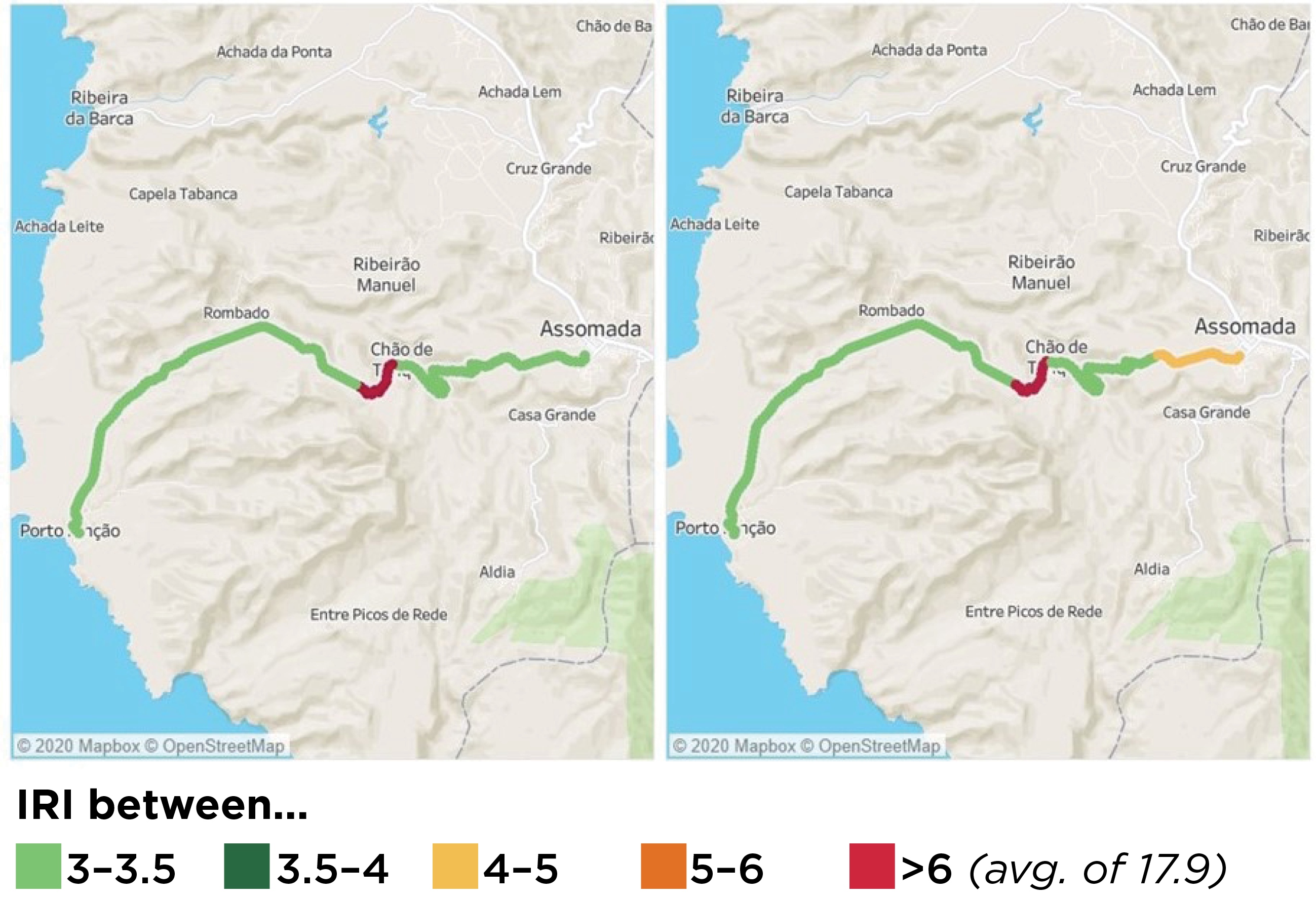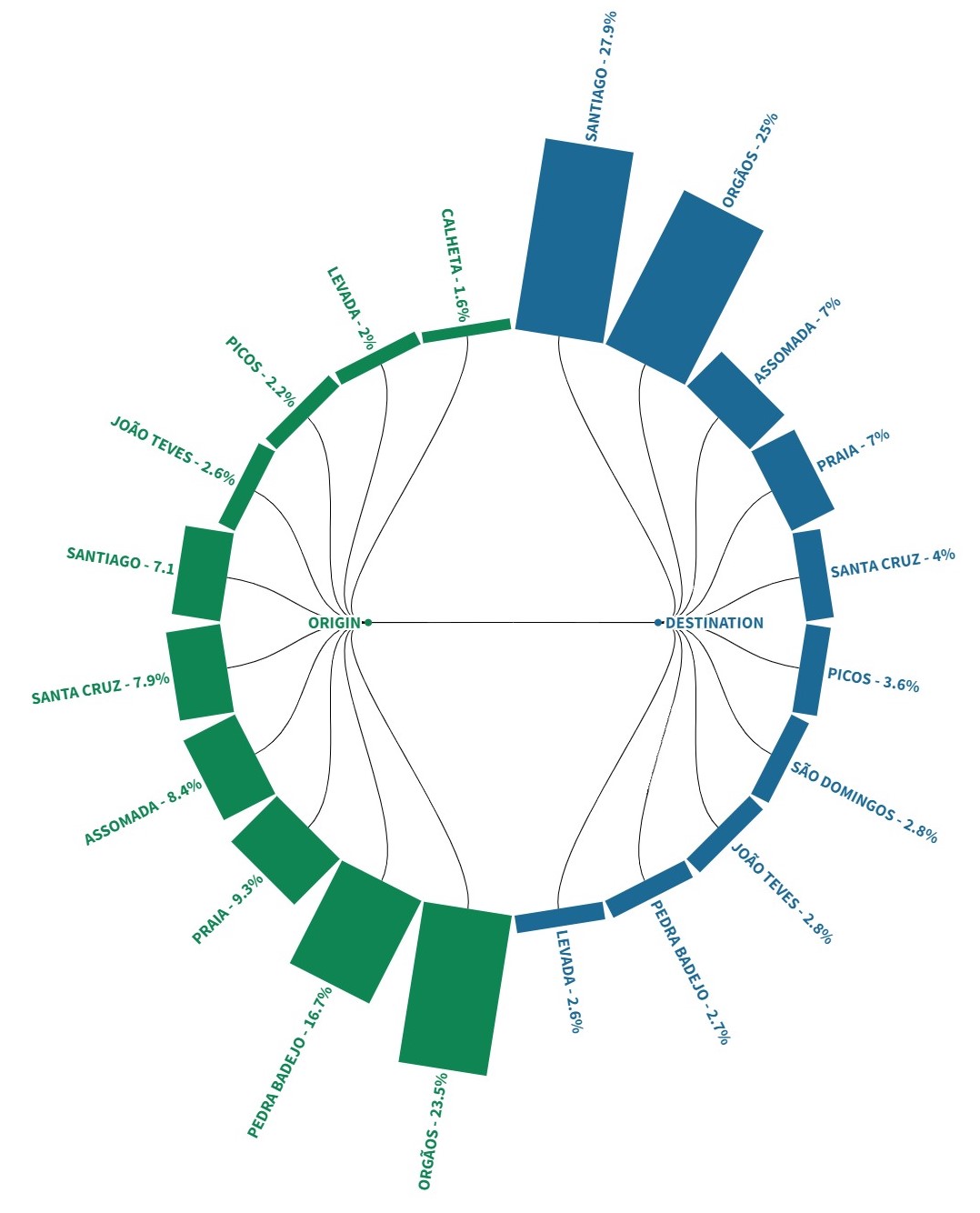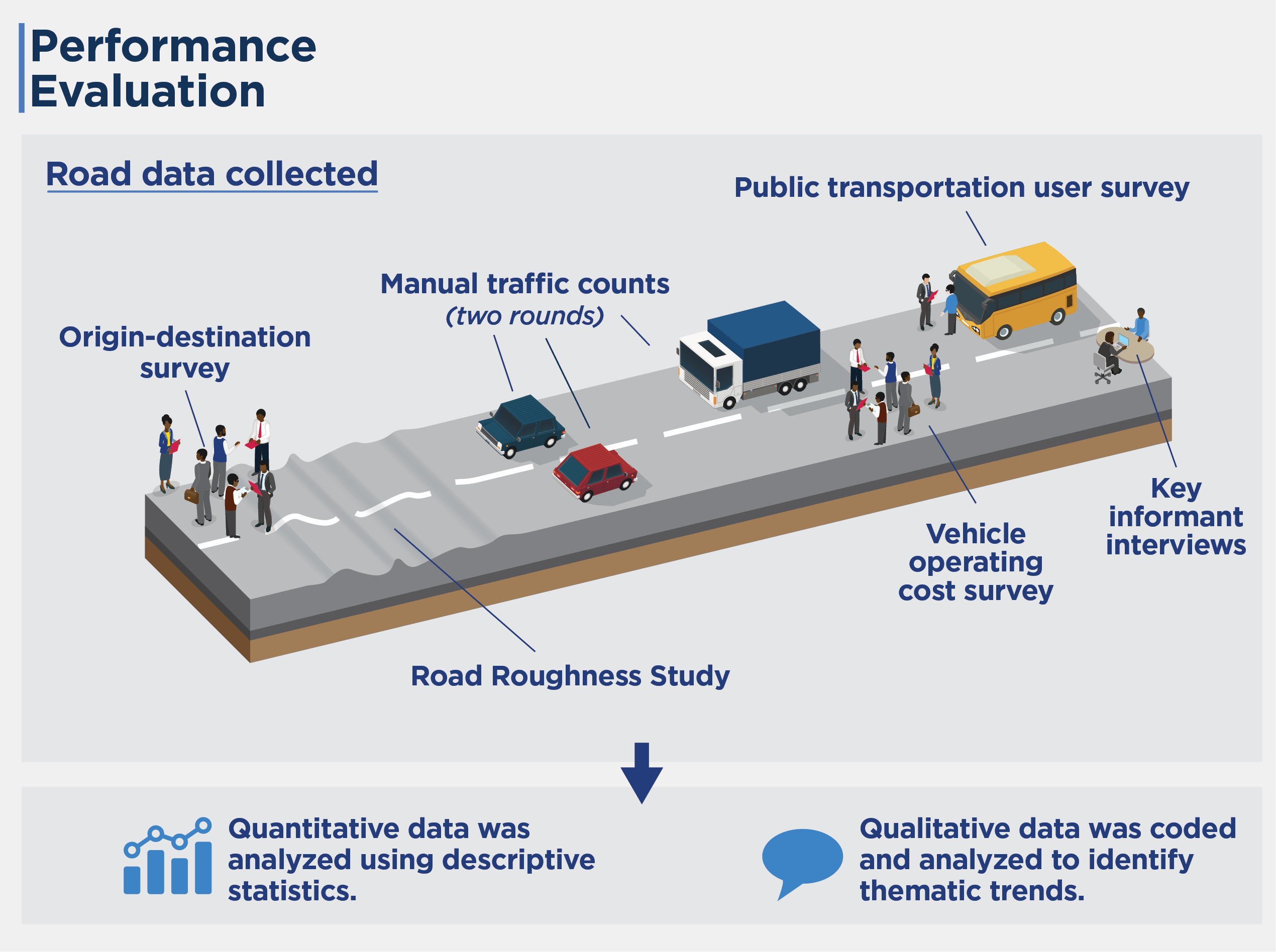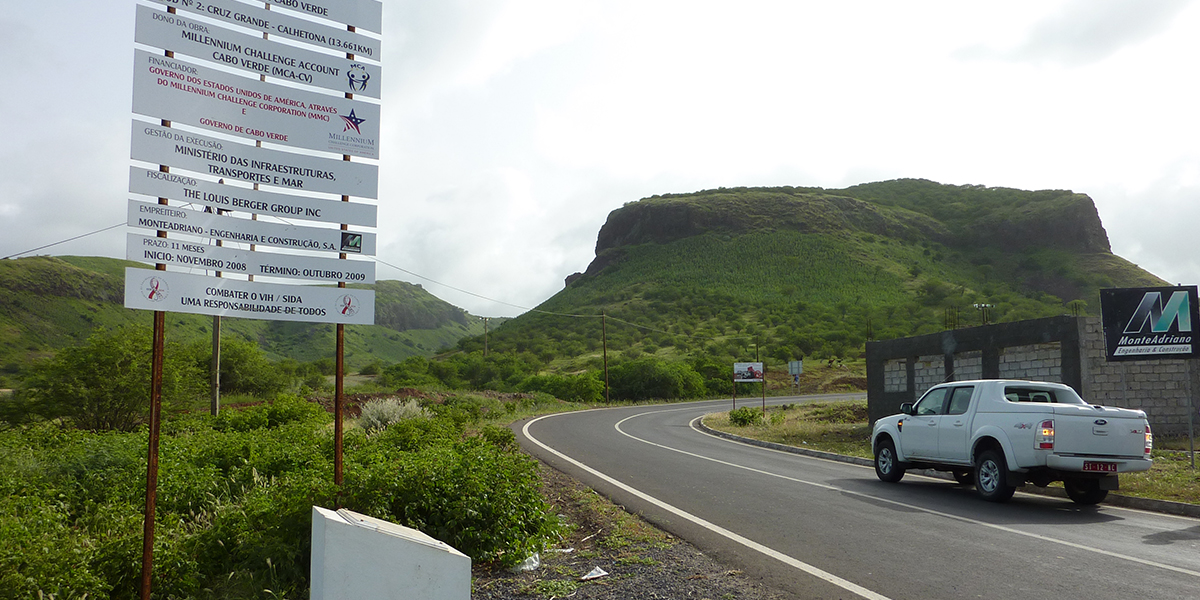Program Overview
MCC’s $110 million Cabo Verde Compact (2005–2010) funded the $27.7 million Roads and Bridges Activity to increase integration of internal markets and reduce transportation costs by improving 40.6 kilometers of roads and building four bridges. This activity was based on the theory that improving road and bridge infrastructure would improve mobility, reduce travel times, and reduce vehicle operating costs.
Key Findings
Condition of Road and Bridge Investments
- Several sections of cobblestone roads were upgraded to asphalt and remained in very good condition with little traffic-related distress.
- Bridge conditions were good, but drains and minor potholes need attention.
Road Maintenance
- The road sector was reformed during the compact through the Road Agency and the Road Maintenance Fund. Around 80% of the fund’s revenues are spent annually on maintenance.
- The three compact-funded roads have received adequate routine maintenance and will not need periodic maintenance for about seven years. Limited resources for periodic maintenance suggest that external resources will be needed at that point.
Road Usage
- Traffic growth was modest. Across all roads, pickup trucks were the most common type of vehicle observed (more than 50%).
- Most trips were work related and included transporting passengers, transporting goods, transporting goods and passengers, commuting, and selling products at markets. The top 10 origins/destinations were Praia, Assomada, and Tarrafal even though these locations are not on the roads themselves.
Evaluation Questions
This final performance evaluation was designed to answer the following questions:
- 1
Was the project implemented according to plan? - 2
Who is traveling on the improved roads, why, what they are transporting, what are they paying for transport, and how long does it take to move along key routes? - 3
What is the economic return – calculated in terms of Vehicle Operating Cost savings and travel time savings – of the road investment? - 4
What are the relevant road authority’s current maintenance practices and what is the likelihood that MCC’s investment will remain adequately maintained for the life of the investment? - 5
What were the effects of MCC’s efforts to improve road network maintenance practices, and what should we learn from them?
Detailed Findings
Condition of the Road and Bridge Investments

Ten years after the road work was completed, asphalt road conditions remain in “very good” condition. Cobblestone sections are in “good” condition. Additionally, all bridges remain structurally sound and exhibit only minor superficial cracking.
Before MCC’s investment, the average road roughness on the International Roughness Index was around 20. After MCC’s investment, the average road roughness on MCC’s asphalt roads was between 3.2 and 3.6, a marked improvement.
Road Maintenance
The institutional framework for the Road Agency and the Road Maintenance Fund has significantly improved since the end of the compact, reflected in part by the establishment of a series of national road plans. However, in May 2019, during the course of the evaluation, the Government of Cabo Verde created a new entity, Roads of Cabo Verde, which merged the Road Agency and the Road Maintenance Fund. The merger’s effect on maintenance practices is not yet known; however, key stakeholders were optimistic that the new entity will further strengthen past practices.
Private sector firms perform routine road maintenance through multiyear, performance-based planning and maintenance contracts that cover 92 percent of the road network. Using visual observations of the road and contract expenditure, the evaluation found that the MCC roads received adequate routine maintenance. However, Roads of Cabo Verde will most likely need support for periodic maintenance (due in around seven years). Stakeholders indicated satisfaction with the level of routine maintenance through these performance-based contracts.
Out of the 11 conditions related to maintenance in the compact, 7 were completed and 1 was partially completed. Although the Cabo Verde road sector improvements cannot be attributed entirely to MCC, supporting the establishment of the Road Fund and of a fuel levy to resource the Road Fund was an important foundation. This levy has been the only source of revenue for the Road Fund and the new entity Roads of Cabo Verde
Road Usage

Top 10 origins and destinations along Road 4
The average Annual Daily Traffic (AADT) rates in 2019 for the road investments were: 547 (Road 1), 584 (Road 2), 562 (Road 4A), and 126 (Road 4B). Traffic growth post-compact was “modest.” Most road users are on work-related trips. Drivers are predominantly middle-aged men, and public transportation users are typically younger and mostly female.
Public transportation accounts for 33-44 percent of all vehicles on the roads. Hilux pickup trucks are the most common and are adapted and used for passenger trips and transporting goods. Cargo transported is mainly for small-scale, informal operations and carried by light- to medium-size trucks (Hiluxes and Dynas). Road 1 saw a relatively large percentage of agricultural items (to be expected given its location along a large agricultural area). Road 4 shows a relatively larger percentage of fish being transported than do Roads 1 and 2. The fishing town of Rincão is this road’s western terminus.
Economic Rate of Return
MCC considers a 10 percent economic rate of return (ERR) as the threshold to proceed with investment.
- 19.20%
Original ERR (Roads Investments) - 10.50%
Evaluation-Based ERR (Roads Investments) - 21.79%
Original ERR (Bridges Investments) - 20.48%
Evaluation-Based ERR (Bridges Investments)
Key drivers of the reduced evaluation-based ERRs include lower-than-expected traffic and higher construction costs.
MCC Learning
A deeper due diligence analysis on potentials of traffic growth should have taken place upstream prior to program design.
Third-party assessments of growth diagnoses and constraints to growth should serve not as the only reliable evidence for investments, but rather as an additional layer of evidence and data source.
A strict requirement for a maintenance regime has proven to help set the basis for the post-Compact, nationwide road maintenance system.
Evaluation Methods

This performance evaluation adopted a mixed-methods approach with both quantitative and qualitative data collection. Primary data collection included two rounds of manual traffic counts, an origin-destination survey, a public transportation user survey, a vehicle operating costs survey, and a road roughness study. Additionally, key informant interviews were conducted with road sector stakeholders.
Quantitative data was analyzed using descriptive statistics. Qualitative data was coded and analyzed to identify thematic trends. As Cabo Verde was the oldest MCC compact still under evaluation when it was analyzed, the exposure period was relatively long at over eight years.
2020-002-2479


